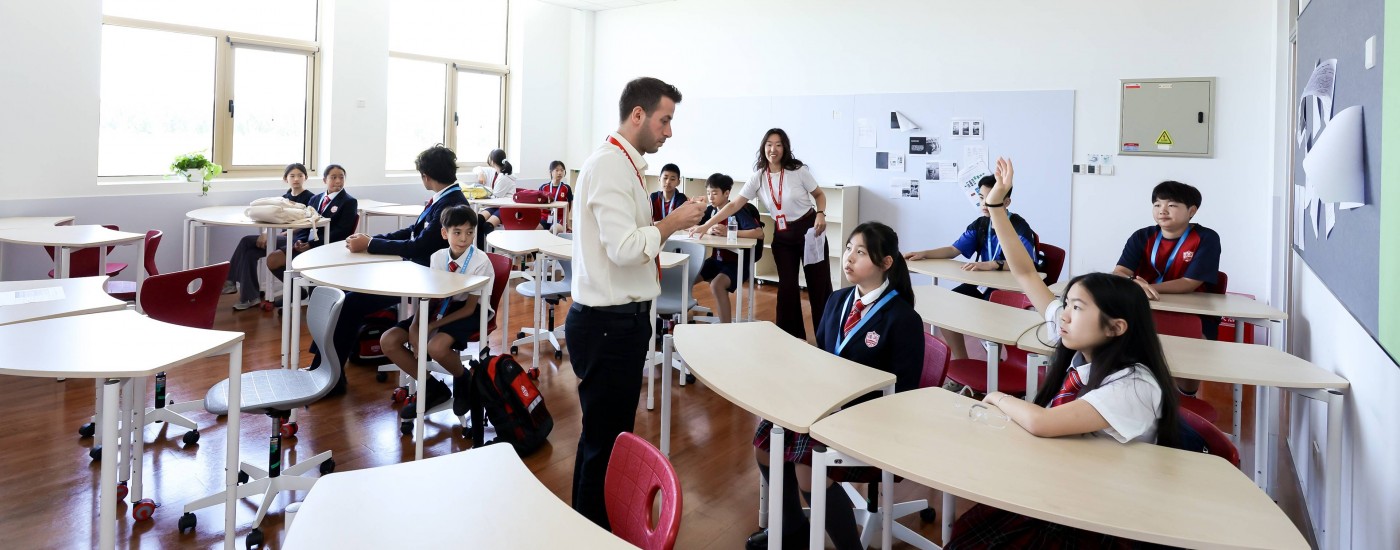
At Dehong, we firmly believe that cultivating language ability goes far beyond a score on a transcript. True bilingual education aims to help children, immersed in two languages and cultures, grow into individuals with enhanced critical thinking, adaptability, and expressiveness. Therefore, on their English learning journey, we focus not only on "what is learned" but also, and more importantly, on "how they are growing."
To this end, Dehong employs a scientific and humanistic assessment system – the Pearson English Benchmark assessment. It allows us to see not just scores, but the genuine learning trajectory of each child.
I. Why Did We Choose the Pearson Assessment System?
We chose Pearson because it is not merely a "test," but an internationally recognised "growth scale." The core of this scale is the globally common standard for language ability – the Common European Framework of Reference for Languages (CEFR).
Think of CEFR as the "common currency" for measuring English proficiency. Whether it's the well-known IELTS and TOEFL tests, or the Pearson assessment used in Dehong, their scores can be accurately converted and benchmarked against CEFR. This means that a child's progress in English, measured through Pearson assessments, can be placed on an international standard for objective and continuous evaluation. We can not only clearly see a child's progress within our school but also understand where their English proficiency stands globally and whether they are prepared for future studies abroad or international exchange.
Scientifically Graded to Witness Every Step of Growth
The Pearson assessment system is closely aligned with the Global Scale of English (GSE), categorising students' English abilities into six progressive levels from L1 to L6. As the levels increase, so does the linguistic challenge, ensuring a clear learning path and well-defined goals. At the Elementary School level, most students take the Young Learners Test, designed specifically for younger learners. For those students who demonstrate exceptional performance, reaching the maximum of Level 6, we provide the Benchmark Test, which is designed for older students, typically 14+. This test uses the internationally recognised A, B1, B2, and C level classifications, offering a suitable 'next step' for students ready for a more advanced challenge.
More importantly, the core of the Pearson Benchmark is not about a single high-stakes test, but its "I Can" statements, which break down language ability into observable, achievable specific goals for listening, speaking, reading, and writing. This perfectly aligns with Dehong's educational philosophy of "not solely focusing on scores" – we care about what a child "can do," not just "what score they got."
II. The Triple Value of the Pearson Assessment:
For Students: Making Progress "Visible," Boosting Motivation
The assessment, conducted three times per academic year, acts like a dynamic "language growth map." Children can clearly see their own progression path from L1 to L6, with each step forward accurately recorded. When the abstract concept of "being good at English" transforms into concrete "I Can" achievements, their intrinsic motivation for learning is naturally ignited.
For Parents: Providing a "Basis" for Communication, Enabling Reassuring Support
The assessment reports build a clear bridge for school-home communication. We provide parents not with an isolated score, but with a "growth analysis" including strengths, areas for development, and personalised learning suggestions. This allows parents to better understand their child's learning journey, transforming them from "anxious supervisors" into "supportive companions." (Please note: While the assessment is conducted three times yearly, detailed reports are shared with parents after the second and third tests. The first test serves primarily as an internal baseline tool for teachers to understand a student's starting point at the beginning of the academic year, helping to inform teaching and support strategies; its results are not shared as a formal assessment.)
For Teachers: Enabling "Precise" Teaching and Targeted Support
Combining Pearson data with teachers' classroom observations generates a "learning profile" for both the class and individuals. This makes "differentiated instruction" truly practicable – teachers can quickly identify which children need scaffolding in writing, and which are ready to tackle more complex speaking tasks. Teaching thus shifts from a "one-size-fits-all" approach to "personalised customisation," ensuring each child receives the most appropriate support at their own pace.
III. Going Beyond the Test: Measuring Ability in Authentic Contexts
At Dehong, we equally value growth demonstrated in those "non-testing moments." A fluent contribution in class, a group project completed in English, a confident performance in an English school play... These natural uses of language within our immersive bilingual environment are equally important indicators of progress. The Pearson assessment and daily performance together form a comprehensive evaluation network, allowing us to see the unique light within every child more completely.
At Dehong, our way of measuring progress involves seeing both the forest and every unique tree within it. We use a scientific assessment system to monitor the rhythm of growth, yet we never let scores define a child's future. Because we deeply understand that the ultimate goal of education is to cultivate confident, independent thinkers ready for the world, and language is the very wing on which they soar.




